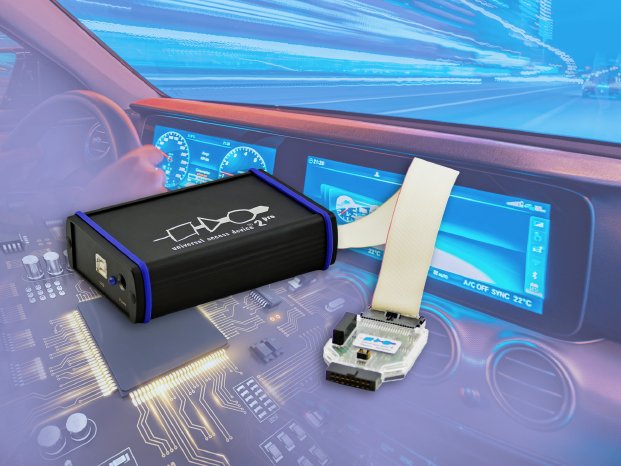With the latest device CYT4DN of the TRAVEO™ T2G family, Infineon addresses applications in the areas of instrument clusters and head-up displays in vehicles. The device combines two Arm® Cortex® M7 cores clocked at up to 320 MHz with special subsystems for graphics and sound on one chip. An Arm® Cortex® M0+ core is also integrated for security tasks. The memory configuration comprises 6 Mbytes Flash, 640 Kbytes SRAM and 4 Mbytes embedded video RAM (VRAM).
In order to meet the high demands in terms of troubleshooting and software testing, the UDE offers, among other things, true multi-core debugging. All cores are visible in a debugger user interface and can also be controlled from there. It is therefore not necessary to open separate debugger instances for the individual cores. The synchronization of both cores by default ensures that both Cortex® M7 cores can be stopped simultaneously at a breakpoint and also restarted from there simultaneously. Synchronous single-step operation is thus also possible. If required, this behavior can be modified by the developer so that the debug actions only affect one of the two cores at a time. Multi-core breakpoints enable convenient debugging of shared code. A multi-core breakpoint is always effective, regardless which core is currently executing the code in question. The application is programmed into the flash of the controller via the integrated UDE MemTool.
For developers working with the TRAVEO™ T2G MCUs, the UDE 2023 offers the advantage of a very easy-to-use user interface. It can be easily customized to meet specific requirements and naturally supports multi-screen operation. Freely configurable perspectives make it possible to define multiple views and switch between them to focus on a particular debugging task. Predefined configurations for both the MCUs and the available evaluation boards supported by UDE allow developers to quickly get started with their actual debug or test task without having to worry about detailed settings.
Fast and reliable access to the TRAVEO™ T2G MCUs is provided by the UAD2pro, UAD2next and UAD3+ devices of the Universal Access Device family from PLS. The physical connection to the Arm-specific Serial Wire Debug (SWD) interface is provided by the standard Arm adapter, which can be used universally for all three devices. For demanding environmental conditions, this adapter is also optionally available with additional galvanic isolation. Support for other members of the TRAVEO™ T2G family of devices is already in the pipeline, so users so users will quickly be able to benefit from a UDE version with device support as they become available from Infineon.



